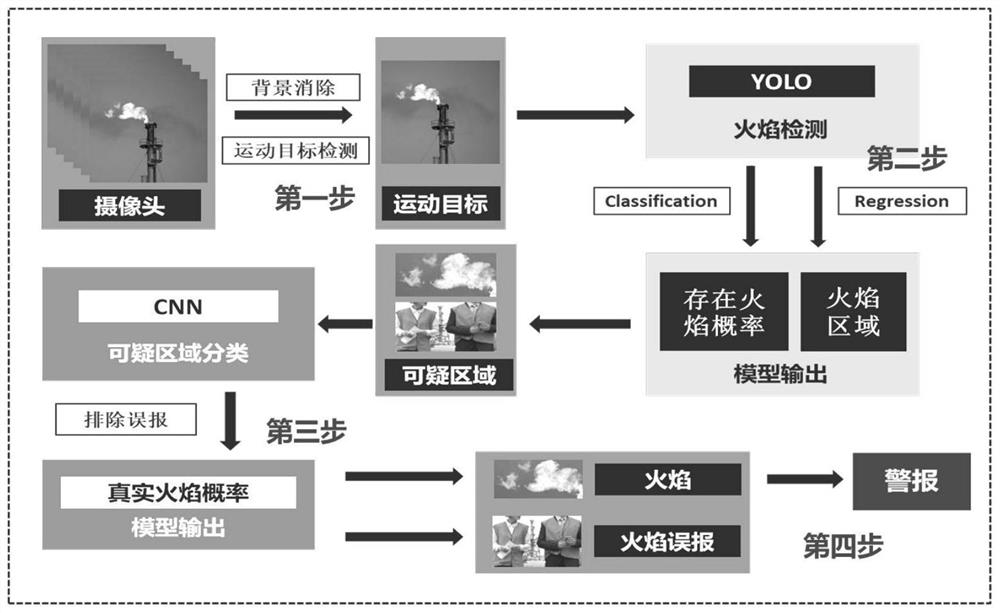Refinery fire identification method based on convolutional neural network
A convolutional neural network and recognition method technology, applied in the field of fire video recognition, can solve problems such as high false alarm rate, user interference, and reduced alarm attention, so as to reduce impact and loss, high recognition accuracy, and shorten early warning time. Effect
- Summary
- Abstract
- Description
- Claims
- Application Information
AI Technical Summary
Problems solved by technology
Method used
Image
Examples
Embodiment 1
[0020] Such as Figure 1 to Figure 2 As shown, the refinery fire identification method based on convolutional neural network of the present invention comprises the following steps:
[0021] The first step is to detect the running target through the background difference method, and judge whether there is a moving object in the current picture.
[0022] In the second step, the moving target is passed into the flame detection model, and the flame probability and flame area are output.
[0023] In the third step, the suspicious area is passed into the false alarm model, and the probability of the real flame is output.
[0024] The fourth step is to judge whether it is a flame or a false alarm according to the probability of a real flame.
[0025] Preferably, the background subtraction method is a general method for motion segmentation of static video, which performs a differential operation on the currently acquired image frame and the background image to extract the target mot...
PUM
 Login to View More
Login to View More Abstract
Description
Claims
Application Information
 Login to View More
Login to View More - R&D
- Intellectual Property
- Life Sciences
- Materials
- Tech Scout
- Unparalleled Data Quality
- Higher Quality Content
- 60% Fewer Hallucinations
Browse by: Latest US Patents, China's latest patents, Technical Efficacy Thesaurus, Application Domain, Technology Topic, Popular Technical Reports.
© 2025 PatSnap. All rights reserved.Legal|Privacy policy|Modern Slavery Act Transparency Statement|Sitemap|About US| Contact US: help@patsnap.com


